Discovering Ohaw: The Essence of Ainu Food
Apr 17,2017
Discovering Ohaw: The Essence of Ainu Food
Apr 17,2017
Part of an occasional series where food culture expert Kiyoshi Aya takes us on a tour of local cuisines and lifestyles all over Japan.
In the town of Shiraoi, Hokkaido, there’s a place that celebrates traditional Ainu lifestyles called the Ainu Museum. It’s also known as Porotokotan, which means “large lakeside village.” Shiraoi, originally the site of an Ainu settlement, started attracting many visitors after the war. The settlement was relocated to the shores of Lake Poroto in 1965. Porotokotan was established as an outdoor museum with the goals of researching Ainu culture and preserving and disseminating Ainu oral traditions. We asked Kiyoshi Aya, who recently visited Shiraoi, about the traditional Ainu diet and culture.
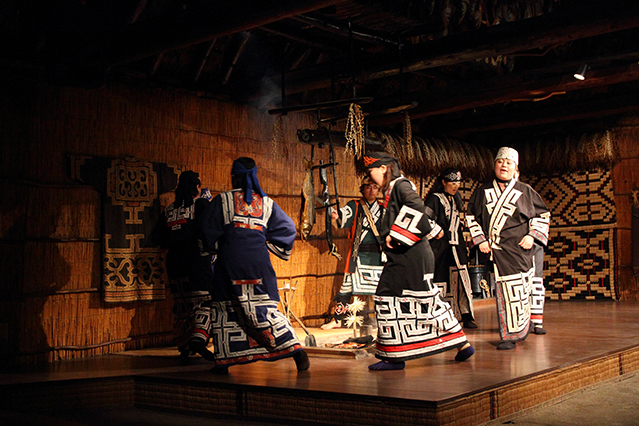
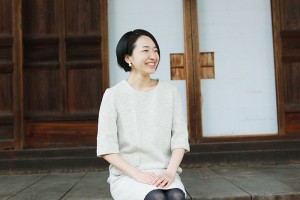
Traditional Ainu food culture, Aya explains, abounds in knowledge of how to survive the severe local winters.
“Ohaw, which means hot soup, is one of the foods with which the Ainu traditionally kept themselves warm in their frigid land. They were basically hunter-gatherers, and they would eat ohaw made with the meat of bears, Yezo sika deer, and various other animals. Salmon were especially valuable to the Ainu for getting through winter. They were called kamuycep or ‘divine fish’ and highly treasured. In the season when the salmon swam upriver, it was customary for all the villagers to partake of the first salmon caught that year.
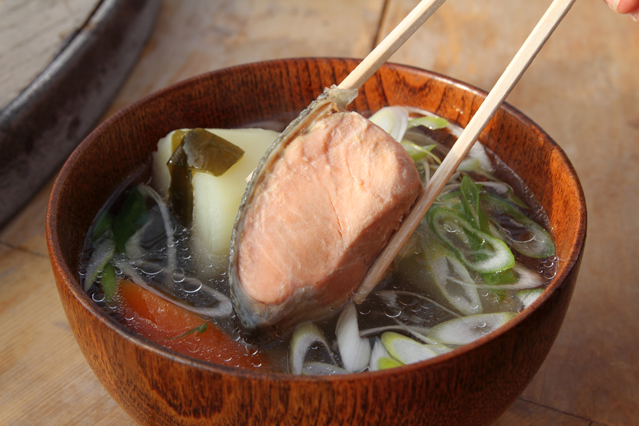
“Once caught, the salmon was sliced up and, after the innards were removed, dried outdoors in the cold. It was then smoked over the hearth inside a chise, as Ainu dwellings were called. The smoked salmon so produced was a valuable source of sustenance during the long winter months. There’s a cafeteria inside Porotokotan where you can enjoy cep ohaw or fish soup containing salmon, potatoes, and daikon. The broth is made from kelp stock and has a light, salty flavor. It tastes really good.”
Cep ohaw possesses a mild flavor, and according to one theory it may be the origin of Sanpei soup, a Hokkaido specialty. Few people practice this traditional technique of smoking salmon anymore; today it is reenacted only on the museum’s premises.
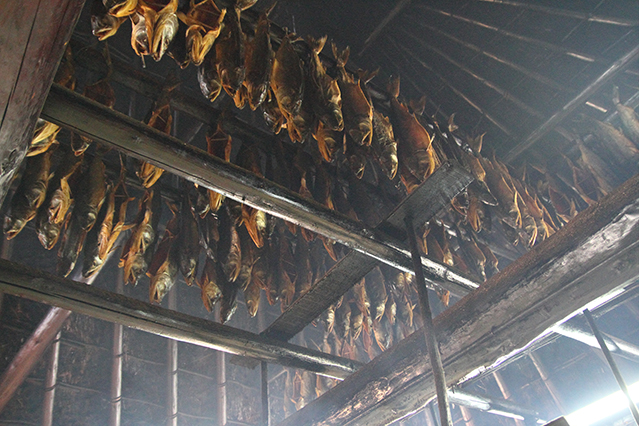
Satchep is made by drying salmon out in the cold, then smoking it over the hearth of a chise
“The Ainu, unlike the Japanese, didn’t have the concept of a main starch dish. They didn’t eat rice. Instead of rice they ate potatoes and lily bulbs as a source of starch. Potatoes were an important source of nutrition, and the Ainu would preserve them by leaving them outside and repeatedly freezing and thawing them and fermenting them. They thus made freeze-dried potatoes. Once the potatoes were completely devoid of moisture, they would pound them into a smooth dough, yielding a preserved food that was a valuable source of nutrition during the winter months.”
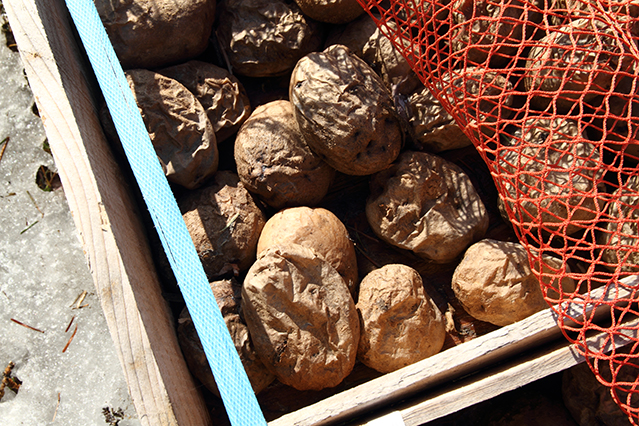
Freeze-dried potatoes, a preserved food that is labor-intensive to make
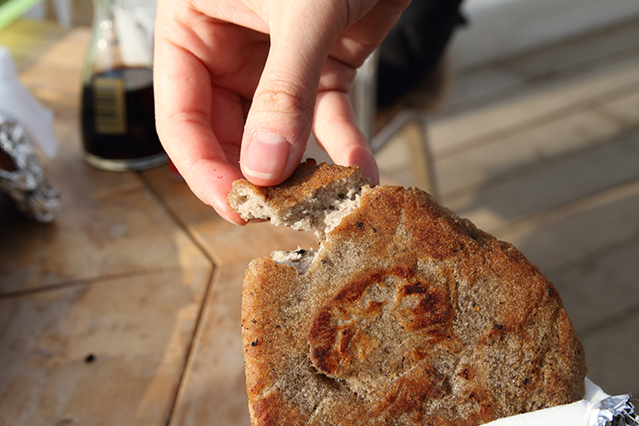
Peneimo are made by adding sugar to freeze-dried potato dough and frying it in oil. With their plain, sweet taste they’re like hotcakes.
“Lily bulbs were made into a preserved food called onturep by removing the starch and then fermenting the residue, forming it into balls, and drying them. These were eaten after being soaked in water. Rice, by the way, was obtained by trading with people in Honshu, but not for eating. It was a precious commodity, and it was used to make sake for ritual purposes.”
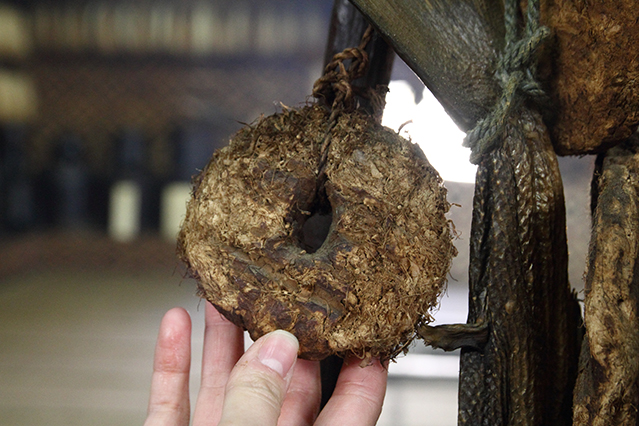
Onturep, a preserved food made by removing the starch from the oubayuri lily, fermenting the residue, and forming it into balls.
The Ainu, who believed that gods dwelt everywhere in nature, excelled in curing and preserving animal and fish meat and vegetables.
“The more I learned about the Ainu’s elaborate and distinctive food culture, the more it amazed and impressed me. Most of their cultural traditions have vanished into history, which really is unfortunate. They wasted none of nature’s bounty, and they always remembered to be grateful for it. Their culture has a lot to teach us.”

food culture researcher
food culture researcher
food culture researcher and Secretary of the Research Division at the National Council for Washoku Culture
Born in Osaka prefecture, Kiyoshi is involved in researching traditional regional Japanese cuisine and the dietary habits in fishing and farming communities as well as writing and giving lectures about local foods.
Recent publications include Washoku Techo [Washoku Handbook] (co-author, published by Shibunkaku), Furusato no Tabemono [Hometown Food] (Washoku Culture Booklet No. 8) (co-author, published by Shibunkaku), and Shoku no Chizu [Maps of Food], Third Edition (published by Teikoku-Shoin).